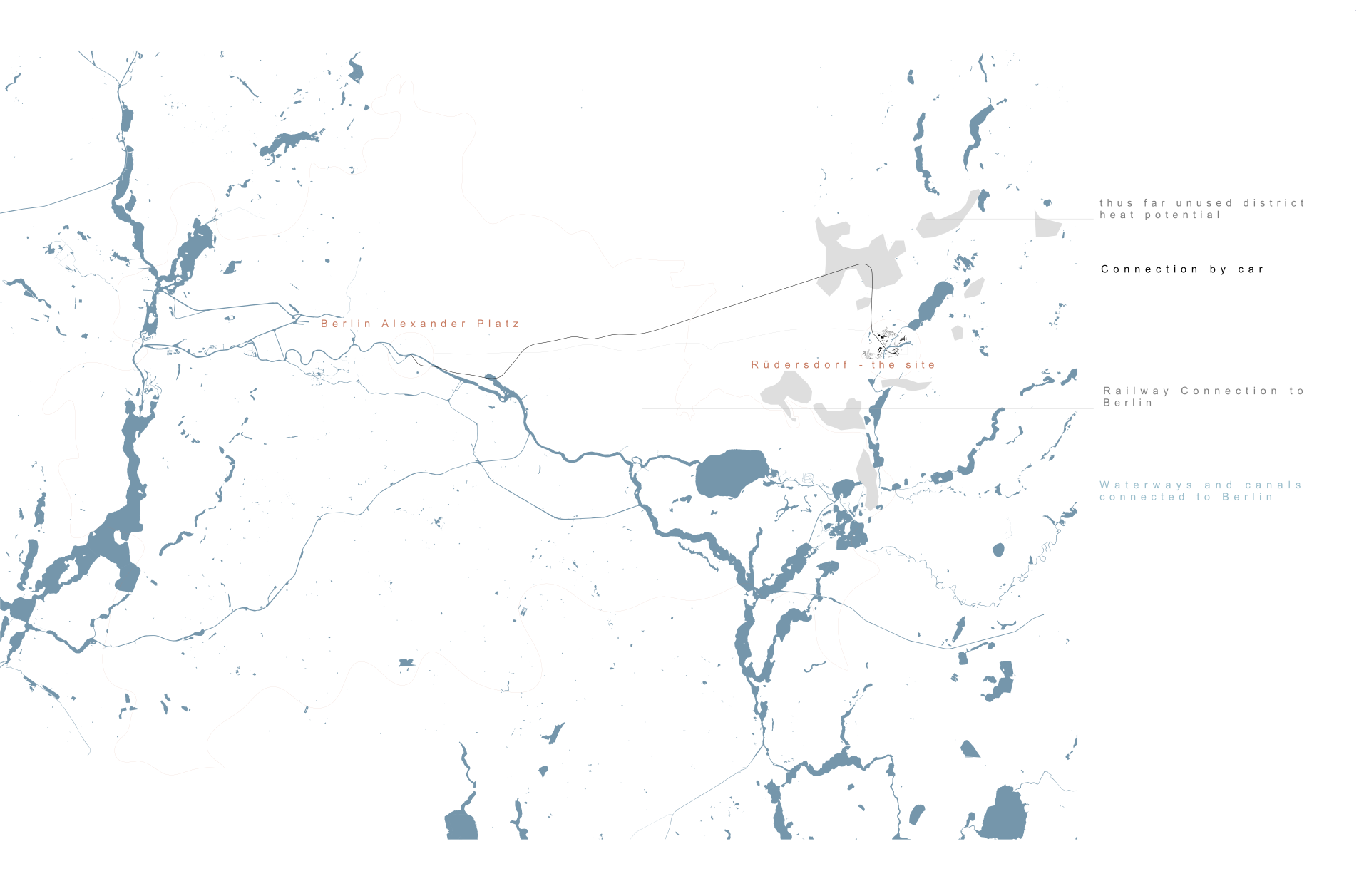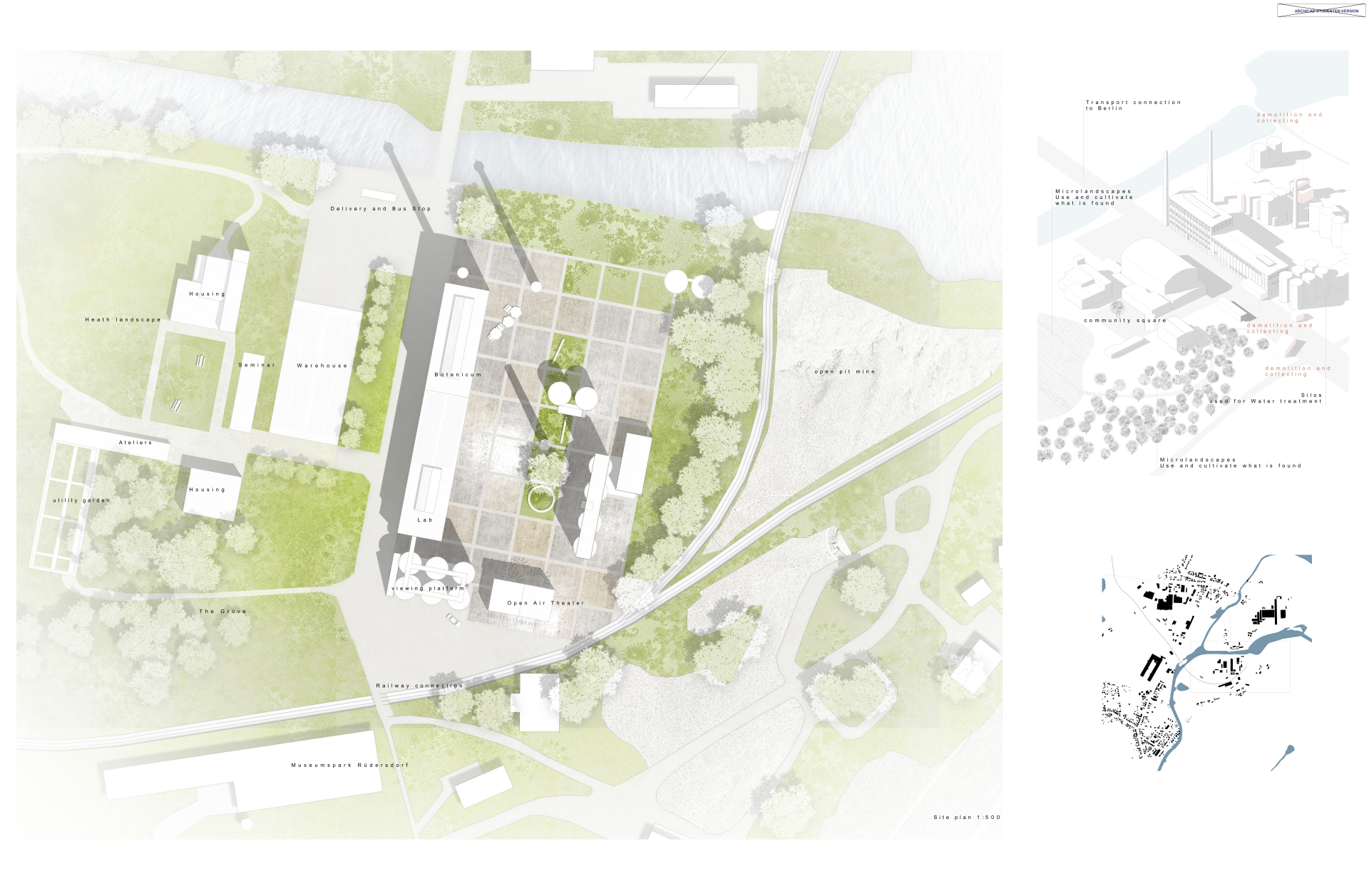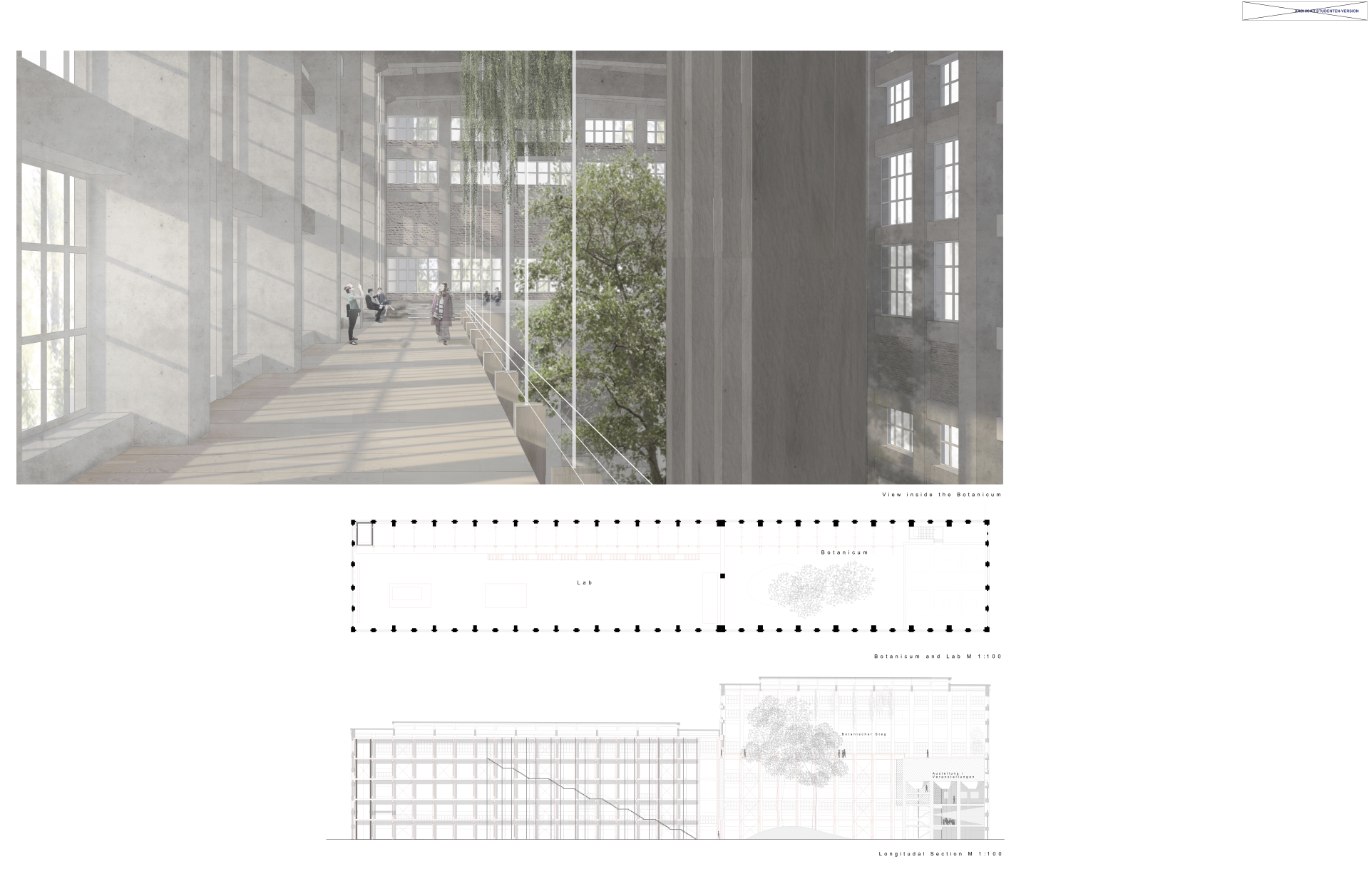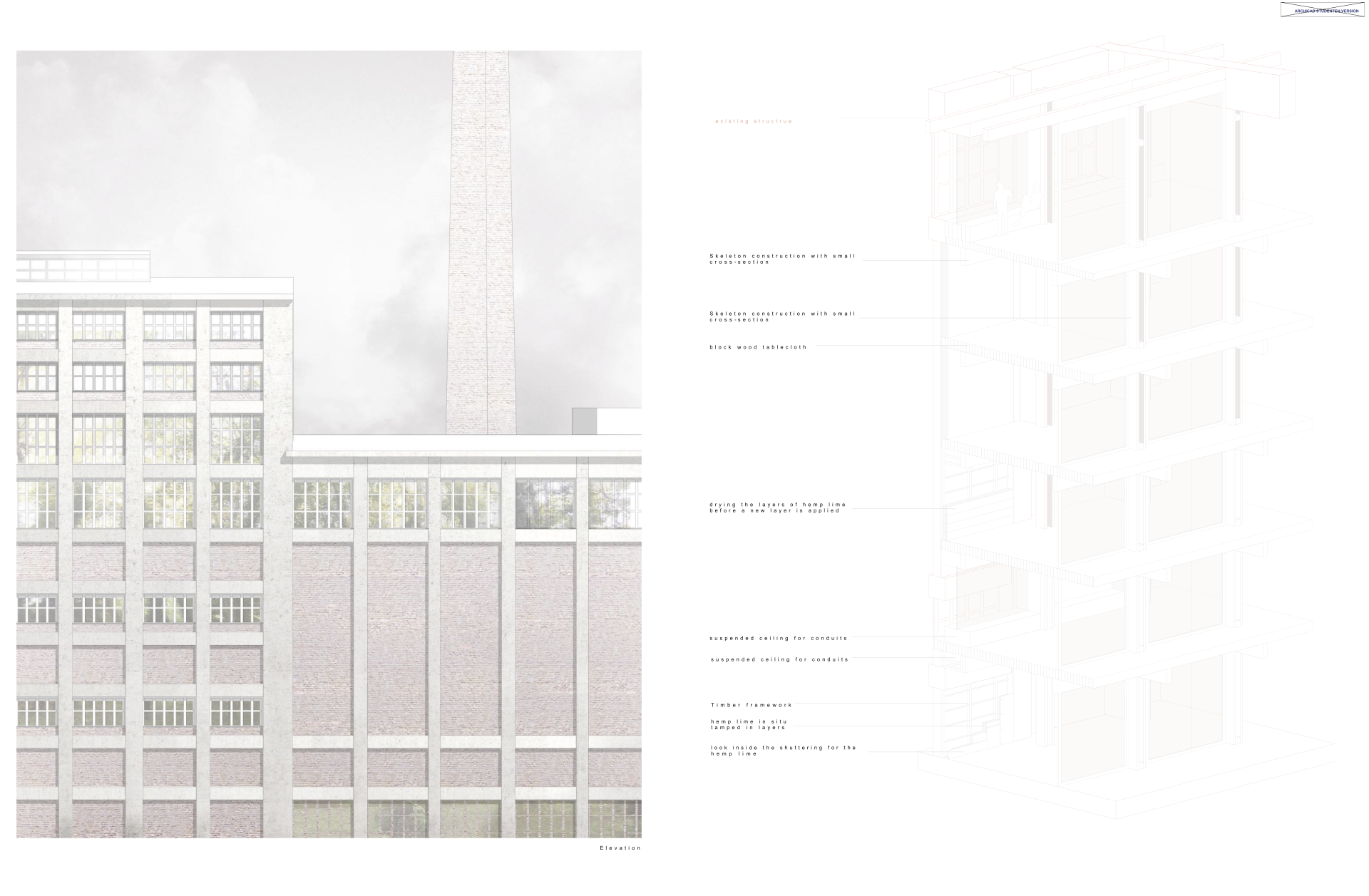Ressource Rüdersdorf, Berlin-Brandenburg
Basic information
Project Title
Full project title
Category
Project Description
Reuse and Recycling of materials and structures can be used to rebuilt new buildings and reconstruct one building out of itself. This means not only that we avoid waste and save energy. It also means that the value of a building increases because it is unique. The concept of reuse can also create identity.
Geographical Scope
Project Region
Urban or rural issues
Physical or other transformations
EU Programme or fund
Which funds
Description of the project
Summary
Keeping what can be kept.
Implement new uses by keeping the character of the site.
Key objectives for sustainability
Its about not only integrating the existing stock in terms of architectural heritage, but also using the demolished materials to reconstruct the site itself. This includes mapping the demolished material, using the intact structures for storage while cleaning, restoring or sorting all that can be reused. This is easier with already existing, abandoned sites, due there is unused space.
Thanks to the mapping, the materials not used can be categorized and catalogued and stored in the warehouse.
The building as its own resource. Surrounding building material manufacturers and wholesalers will be involved in research work, knowledge transfer and storage capacities will be expanded. Existing infrastructures of the industry will be shared (railroads, roads but also storage areas and waste heat as district heating)
Soils are decontaminated (for exampe by cultivation of hemp), micro landscapes are created according to the existing structures of the place.
Key objectives for aesthetics and quality
Work in the existing, industrial, large-scale context. The spatial structure of the old industrial site is preserved and transformed within the context. The access roads and already sealed surface are used. Vegetation is integrated as "micro landscapes". The mixing plant is the center of the site. With a native botanic walk inside and a laboratory for circular building, it invites visitors to experience the fabulous building in a new way.
By placing boxes on a framework that is thermally independent and works without composites allows deconstruction or reconstruction without harming the existing structure. The structure can be interconnected, opened or closed. At the same time, the hall architecture remains visible.
The indoor garden is the visitor portion of the Mixed Plant and is connected to the Lab via a "botanical walkway". (Tours for the lab are offered).
Here the stock is overgrown with native plants. Paths, stairs and the floors of the silos become a path through the native flora in the backdrop of the industrial halls.
Key objectives for inclusion
The area allows for various uses
The large square should be public and open for use.
The square as:
Theater / market / events / garden / swimming area.
Botanicum:
As an invitation for the curious / gallery / restaurant.
The community square as:
Overnight accommodation for visitors
Housing for working people
Place for knowledge transfer
The warehouse
as storage / as selling point
It can be accessed by car from the north or by a walk through the existing museums park in the south.
Physical or other transformations
Innovative character
There is an invitation for the curious - the botanical center, a newly developed area for the community - the square and the bathing area and an invitation for the surrounding businesses to transfer knowledge.
The proximity to Berlin makes it possible to generate reach through cultural and educational offerings.




